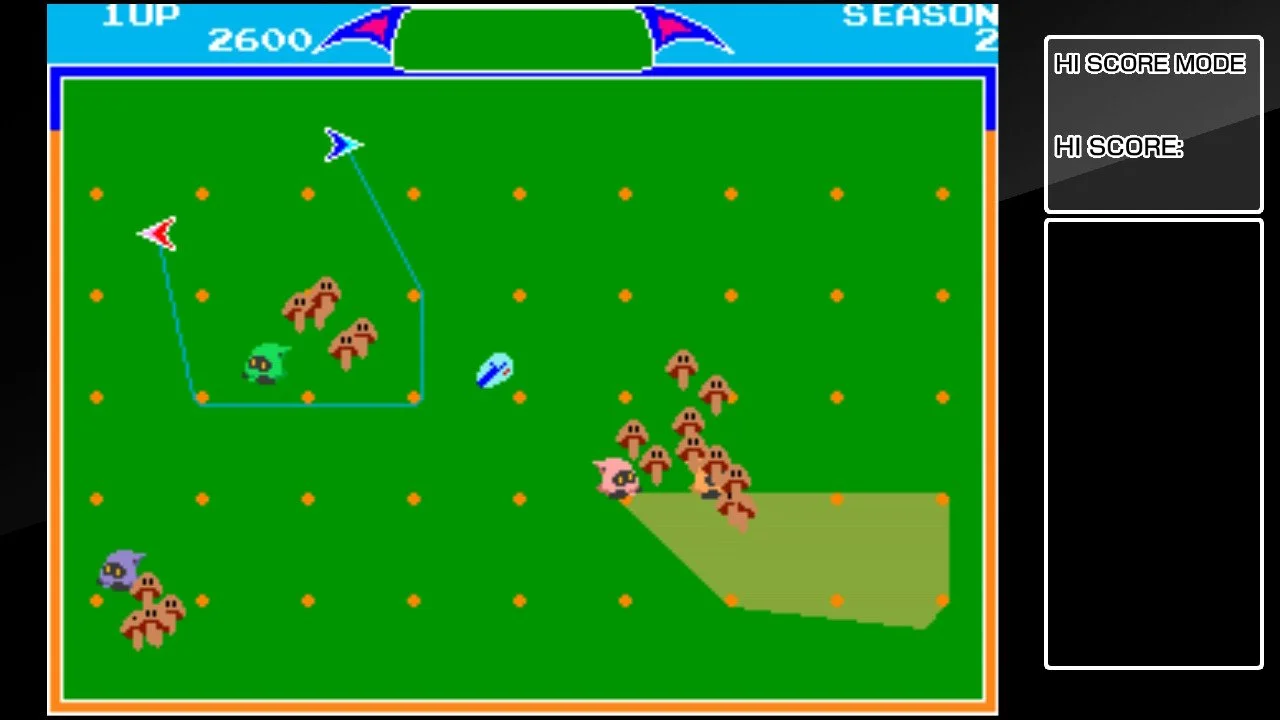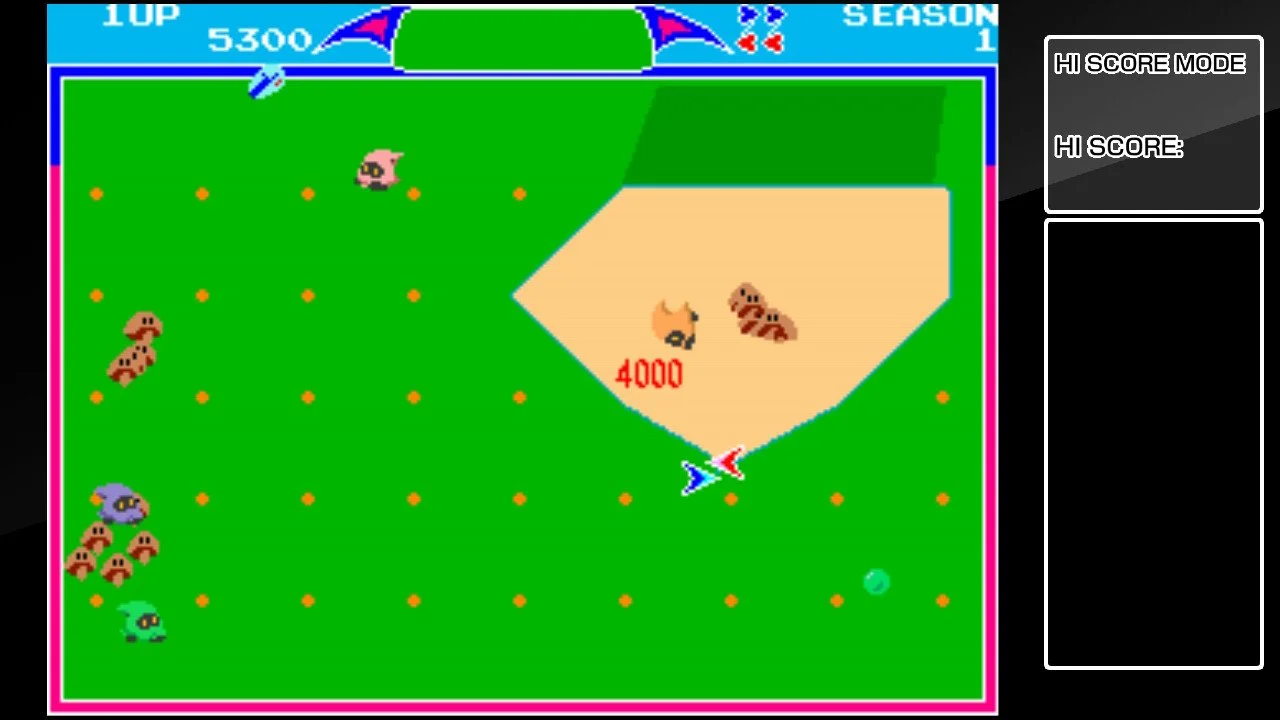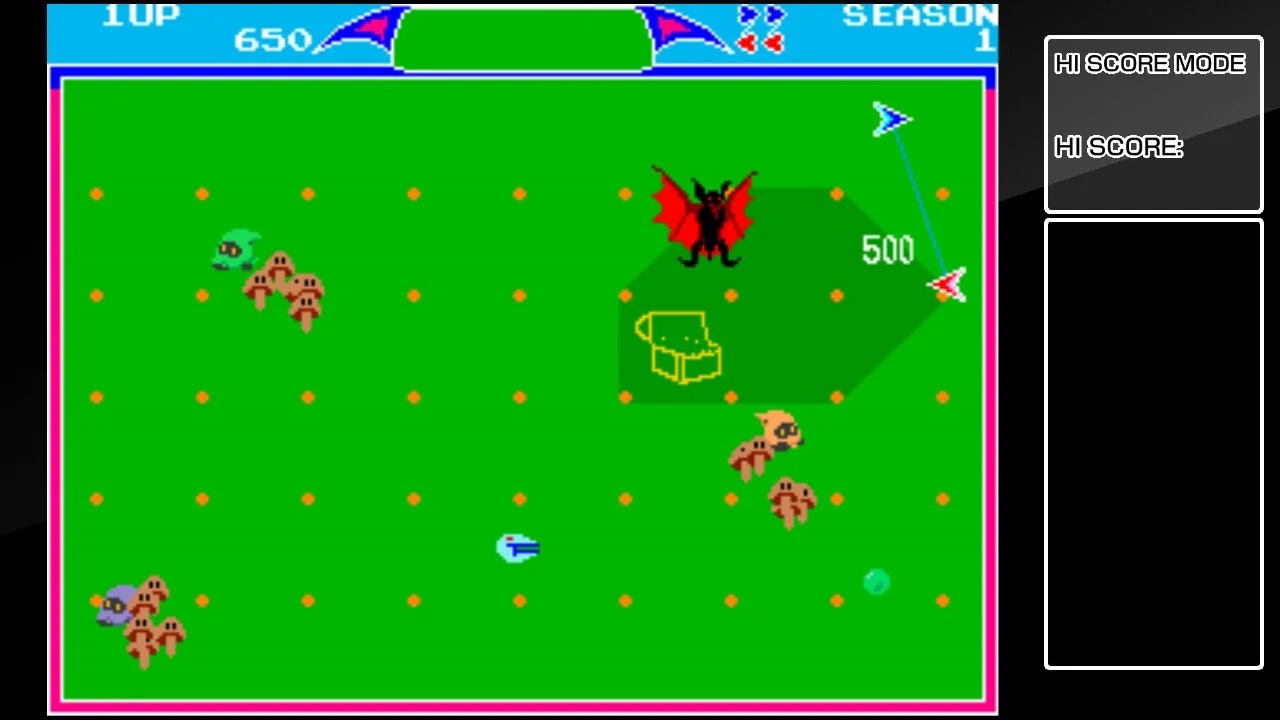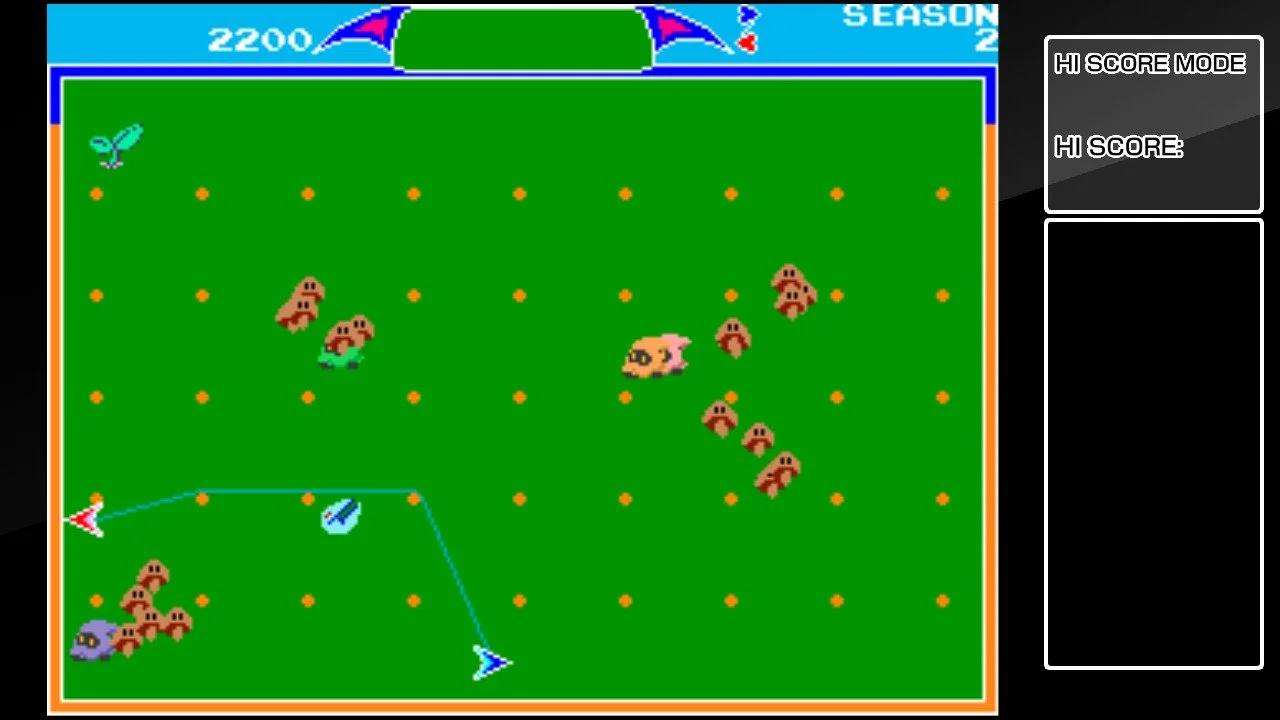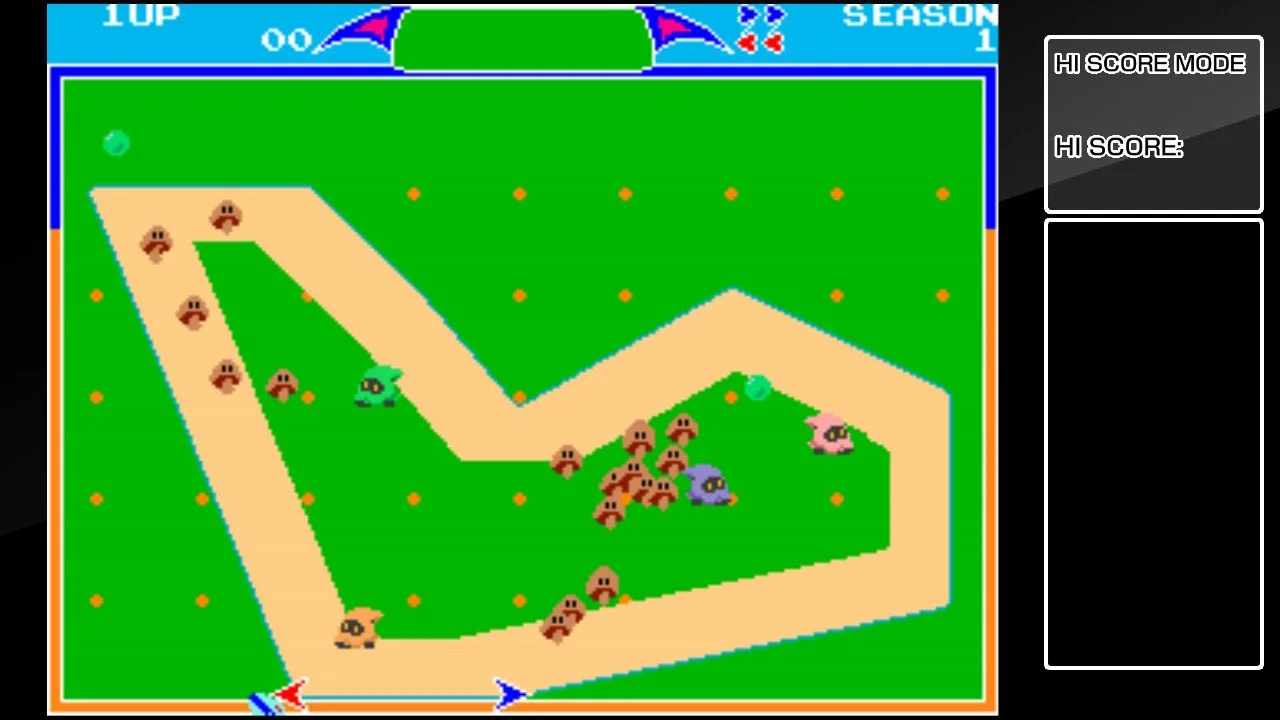Libble Rabble: An Underappreciated Gem
It’s remarkably easy to admit that I would never have played Libble Rabble if it wasn’t for Tim Rogers. That’s because if it wasn’t for him I never would have known that Libble Rabble even existed.
Also, I’m going to write the words Libble Rabble a lot in this essay because it’s the title of the videogame, and also because it’s extraordinarily fun to say out loud and I look forward to my editing process.
Libble Rabble.
Damn that’s brilliant.
It’s like bubble wrap made of words.
Libble Rabble.
Okay I’m done.
Back to Libble Rabble.
My girlfriend makes fun of me, because it’s easy, but also because I am, in her own words, “Dead-Ass obsessed with that guy.” That guy is Tim Rogers, and apart from not understanding what buttocks has to do with my obsession, I acknowledge that I am a dedicated fan of the man and his work. I love his YouTube series Action Button Reviews and have watched all of them multiple times. There’s an attention to detail, as well as a ludicrous amount of analysis that I find respectable, and, frankly, I can't find anyone on Youtube with the same level of quality and possibly insanity. Though my favorite video is almost certainly his DOOM essay, it’s no small statement to note that it was his Pac-Man video that eventually led me to wind up playing that game about once a day, everyday, for the last year and a half.
This is relevant because Pac-Man was designed by Toru Iwatani, who also developed Libble Rabble, and I know that because Rogers dedicates an entire chapter of his three and a half hour essay about this game and its design philosophy.
Cover art provided by Moby Games.
Developed and published by Nacomo Limited, Libble Rabble was originally released as an arcade game in 1983. It would later be ported to the Sharp X68000 in 1993, the FM Towns in 1994, the Super Famicom(the original Japanese version of the Super Nintendo Entertainment System) in 1994, the Nintendo Wii in 2009, and finally the Playstation 4 and Nintendo Switch in 2021.
Libble Rabble is a top-down, fantasy, action, puzzle game involving two opposite facing arrows on a rectangular screen covered with dots that represent pegs. Each level is a season with an animated sequence where the screen is filled with trees, their leaves (or lack thereof) indicating which season it is. The player controls a red arrow named Libble and a blue arrow named Rabble and the goal is to move these two characters around the screen and wrap enemies within the confines of the rope that connects Libble and Rabble together. Most of the enemies players will encounter are mushrooms called Mushlines, little hooded figures named Hobblins, fireballs called Killers, sparks called Changers, Atari Pac-Man look-alikes named Shears, and even Demons (which as far as I can tell are just called Demons(I mean, they’re demons, they don’t need a clever nickname(A demon’s a demon dude))). Sometimes the player will manage to wrap Libble and Rabble around a chest, and this will trigger the release of bonus creatures named Topcups. These sprites (apart from appearing on the cover and promotional material for the game) provide bonus points and if the player can corral them all before they reach the edge of the screen they will receive letters and points that will result in an immediate win.
Like most early arcade videogames, the narrative of Libble Rabble is, frankly, nonexistent. I’m controlling arrows and wrapping them around pegs to trap enemies and score points. Trying to establish anything like a cerebral narrative would be an exercise in futility, not to mention a waste of my reader’s time.
Y’all decided to come here instead of Tik-Tok, so I ain’t gonna do you like that.
As a quick aside, I note that Tik-Tok also sounds like a random, absurd title for an arcade game from the 80s, and now I’m disappointed nobody ever thought of that.
Libble Rabble is deceptively simple by today's standards of complex visual and narrative design in interactive media. There are no cutscenes, there’s no dialogue to speak of, the protagonists(such as they are) are literally just two arrows connected by a string of pixels. There’s no explanation for why these arrows are trying to catch these mushrooms, fuzzballs, fireballs, and hooded goblins. There is no voiced dialogue, and all sounds in the game are a collection of digital bells ringing indicating success or failure. Failure does not trigger any cutscene of death animation; the game just immediately ends or shifts to the player’s next round. Libble Rabble is exclusively the movement of the controllable avatars and the geometric forms made by moving them around the pegs.
So why play it?
Well, because it’s fun.
It’s important to remember that explanations for arcade and/or puzzle videogames like Libble Rabble would, if I’m being honest, be redundant. As I’ve noted when I’ve written about videogames like Pac-Man, Tetris, or Solitaire complexity of narrative (or even narrative itself) is not an automatic indication of quality. Likewise, some of the most entertaining and addictive videogames ever made have had simple interfaces. Whether it's been Minesweeper, Galaga, or even Pac-Man, visual and narrative simplicity in videogames can capture and keep a player absorbed for hours or years as long as the gameplay loop is entertaining, engaging, and most importantly, fun.
Libble Rabble is a fun videogame…once I figure out how to control these characters.
The goal of Libble Rabble is to wrap enemies within the pixelated rope that connects Libble and Rabble together. This is a challenge in and of itself because the player has to control two avatars at once. This, honestly, is a mind bender to me as I consider how much of my time has been spent playing videogames.
Just about every videogame I’ve ever played centered its controls around one central figure. Silent Hill 2, DOOM, Legend of Zelda: Wind Waker, Super Mario Bros. 3, Darksiders 2, Pokemon, Resident Evil 2, A Short Hike, Spartan: Total Warrior, Animal Crossing New Horizons, and every Final Fantasy game is built around players controlling one character at one time. Likewise abstract puzzle videogames like Tetris and Pac-Man have players controlling one avatar or unit at a time. Heck, even point and click videogames like Myst, Solitaire, Pharaoh, or I Have No Mouth and I Must Scream rely on a single cursor for the entirety of the game. This list is important because it demonstrates that through most of the history of the medium of videogames designers have centered their user interface around one avatar.
It makes sense then why playing Libble Rabble was a challenge the first time I ever played it. I lost over and over again trying to navigate these controls using my gamepad. After a few rounds I finally managed to catch three Mushlines in a square, and, frankly speaking, I felt a sense of accomplishment that would have rivaled scaling Mount Everest.
At this moment, my brain exploded, the light bulb switched on, I became the expanded consciousness meme, and I mimicked Kronk from The Emperor’s New Groove and said aloud, “Oh yeah, it’s all coming together.”
And then, I tried again and immediately failed.
Though I never learned how to play piano, I understand that the importance of learning how to use both hands while playing the instrument will steadily grow the ability to approach and eventually master more complex compositions. Libble Rabble ain’t exactly playing the piano, but players who give it time will steadily observe themselves moving the arrows around the map with far more grace and precision. And this learning legitimately feels like growth while it’s happening.
The controls for Libble Rabble are, admittedly, sluggish; this is just the reality of its original software due to its contemporary hardware limitations. Moving the arrows around the rectangular field is not like moving Link across a pasture in the fields of Hyrule[LINK***]. It’s a not-slow-not-fast motion that is designed to build the tension of capturing enemies as they’re running about, or, in some instances, trying to catch and attack Libble and Rabble as they’re enemies around and between the pegs.
It’s important to note that this control system creates some interesting real-time strategy dynamics. Knowing that moving Libble and Rabble requires synchronicity of controls, and understanding the pace at which their avatars will move around the screen, gives me insight into how to actually approach wrapping the Mooshlins within the ropes. I can’t just quickly wrap enemies because Libble and Rabble don’t move fast enough, and if I don’t situate the rope in just the right fashion enemies will sneak out from the trap before I’ve closed the polygon around them. The game challenges me to master these control systems and then immediately formulate a plan that will catch as many enemies as I can before the Hobblins begin their attack. If I can create squares, triangles, or other polygons around the enemies quickly then I will be less likely to wind up being caught. Likewise, each new stage alters the layout of the pegs along the board which means I will have to continue alternating my strategy within each level. Libble Rabble’s control system forces players to juggle level analysis with real-time strategy because they cannot easily predict what will come next. What works in one level is not going to work in another level, and the way I account for the movement of my avatars is going to dramatically alter how I approach beating each level.
This is all to say, that movement speed is important, but nowhere near as important as simply finding the right spaces to move Libble and Rabble to during the actual game.
Besides movement itself, one of the joys and frustrations of Libble Rabble is how enemy non-playable characters(npcs) attempt to stop the player from winning. I noted in a previous paragraph that sometimes enemies will attack Libble and Rabble mid-game. Primarily it will be the hooded Hobblins, who to some extent will mimic the ghosts of Pac-Man. They will scatter to the corners of the rectangular field at the start of the game for a few seconds before their AI triggers and they will begin a pursuit phase. If a Hobblin touches Libble or Rabble the game immediately ends and the player will have to start over.
Hobblins are obnoxious, and lack the charm of Inky, Pinky, Blinky, and Clyde, but honestly they are not the most frustrating npcs in the game.
That title would go to Shears.
Looking a lot like the Atari version of Pac-Man, these characters have a far more pernicious (and arguably sadistic) role to play in Libble Rabble. While other enemy npcs will simply try to attack Libble and Rabble, Shears instead will emerge from one of the edges of the field and move in a vertical, horizontal, or diagonal path often purposefully in line with the digital rope that’s being used to trap enemies. The name Shears should clue my reader into what happens next: Shears will cut the rope, releasing every enemy contained therein.
To say I’ve yelled profanities at these npcs would be putting it lightly.
I have crafted curse words seemingly from alternative linguistic dimensions to level at these Pac-Man wannabes.
I despise them.
So much.
And, I love them, because of the perfection of their design.
It makes absolute sense that a game about trapping monsters in a rope would involve characters who cut the rope. It’s almost frightening how much logical sense it makes.
A comparable enemy would the Goobles from Super Mario Sunshine. I’m not even making that up, their name is literally Goobles and they are the paint bubbles that form up from the various puddles of paint Mario will encounter. Super Mario Sunshine is about Mario trying to clear his name after being falsely accused of ruining the region of Delfino (the island paradise where he and Princess Peach were just trying to have a vacation) . The game has numerous enemy npcs that, narratively, reflect the visual theme of paint. The Fake-Mario wields a paintbrush that creates literal, and unending globs of paint that can create monsters like paint-soaked piranha plants, but also Goobles that wobble towards Mario if he gets too close and will then leap towards him and explode. Mario’s defense is the FLUDD(Flash Liquidizer Ultra Dousing Device(yes I memorized it’s full title (that was a lie I totally Googled it))). FLUDD is a power soaker backpack that washes paint using a reserve of water at its base. Much of the gameplay of Super Mario Sunshine is Mario spraying water to eliminate the puddles of paint where these Goobles are forming, and in a game about washing paint off of walls, statues, floors, and buildings of course there’s an enemy composed of nothing but this malevolent and seemingly sentient paint.
It would be ridiculous not to have enemies made of paint.
I use the example of the Goobles (and damn if ain’t fun saying that word out loud over and over again) because like the Shears they embody how enemy npc design can shape the experience and rhetorical consistency of a videogame.
Shears challenge players to formulate strategies, wrap enemies quickly, and perform actions before their work is undone. Libble Rabble can almost be considered a real-time strategy game as I progress further into the levels because enemy npc count and frequency increases, the number of pegs to wrap the rope around dwindles, and rewards such as treasure chests become infrequent. The challenge, and the fun of Libble Rabble becomes anticipating Shears and Hobblins as they strike the rope and arrows.
It also comes from yelling profanities at your monitor or TV right as you were about to trap 20 Mushlines in one square and a Shear cuts the rope.
Fun times, not gonna lie.
At this point in the essay, I think I should explain another reason why I wanted to write about Libble Rabble.
So here it is.
I believe Libble Rabble deserves more attention, both in terms of commercial sales as well as critical response. I recognise a videogame this old is largely going to appeal to hobbyists, videogame academics, and niche crowds arcade aficionados, but Libble Rabble is an incredible videogame that offers players a unique user interface. I wanted, in this essay, to acknowledge its strengths and hopefully remind readers that this game exists and that it offers a substantive challenge. It would be easy to observe and then dismiss its visual aesthetic of cute, pixelated chibi mushrooms with eyes and its penchant for angular dimensions (and I note as a brief aside I want to write something in the future about the geometry in this game (because it’s flipping gorgeous)). But hopefully as I’ve noted there are control mechanics and level design elements that build a challenging and engaging game that can stand alongside other great videogames if given the opportunity.
The fact that I never knew Libble Rabble existed until I watched a 3 ½ hour video on YouTube is honestly a tragedy. This game is great and makes me want to play it. It makes me want to write essays about it. It makes me want to dissect every individual component to figure out how it works.
In short, Libble Rabble is flipping rad dude.
Two arrows, some pegs, a rectangle, and a rope are enough to keep me entranced for minutes and hours. Libble Rabble is one more reminder that videogames can accomplish incredible wonders, and the medium works best when all it asks if its player is a desire to play.
Joshua “Jammer” Smith
8.18.2025
Like what you’re reading? Buy me a coffee & support my Patreon. Please and thank you.
